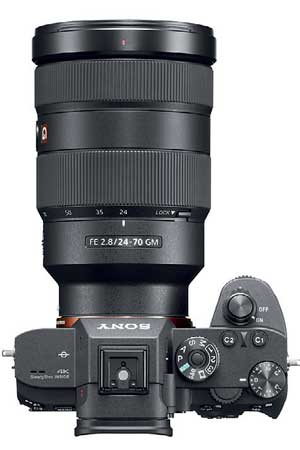Thursday Dec 18, 2025
Thursday Dec 18, 2025
Tuesday, 23 January 2018 00:00 - - {{hitsCtrl.values.hits}}
 At the launch of SONY A7R III Camera to Sri Lankan market (from left): Sony International Sri Lanka Head of marketing Dilshan Gammampila, Sony International Assistant Manager of Digital Imaging April Lee, Sony International Sri Lanka Deputy head Ethan Yap Thong Hunt, Sony Sri Lanka Brand Ambassador Dimitri Crusz, CameraLK Founder and Managing Director Anushka Gunasinghe, Sony International Sri Lanka Country Head Justin Wong, Sony Sri Lanka Brand Ambassador Anushka Eranga and CameraLK Director Noeline Pereira
At the launch of SONY A7R III Camera to Sri Lankan market (from left): Sony International Sri Lanka Head of marketing Dilshan Gammampila, Sony International Assistant Manager of Digital Imaging April Lee, Sony International Sri Lanka Deputy head Ethan Yap Thong Hunt, Sony Sri Lanka Brand Ambassador Dimitri Crusz, CameraLK Founder and Managing Director Anushka Gunasinghe, Sony International Sri Lanka Country Head Justin Wong, Sony Sri Lanka Brand Ambassador Anushka Eranga and CameraLK Director Noeline Pereira
The revolutionising mirrorless camera, SONY Alpha last week released its latest version; A7R III for the Sri Lankan market.
The SONY A7RIII camera has been introduced by the authorised dealer, CameraLK in collaboration with the product’s mother company; SONY.
The invited guests were warmly welcomed by CameraLK Director Noeline Gunasinghe, explaining the relationship between SONY and CameraLK and what is to expect from the partnership in the future.
April Lee, the assistant manager of digital imaging SONY international explained how they were able to merge two products; The King of speed; SONY a9 and the high resolution flagship of their lineup, a7RII together to make the a7RIII. She also mentioned how this product has been improved from the feedback that they received from the existing customers of both a7RII and a9 cameras.
The featured product, the a7RIII camera, a new light weight, yet fast and sharper lens, SONY 24-105mm f4 G Series lens, and the SONY RX0, an action camera for professional cinematographers, to create content with a familiar colour profiles and production process.
This camera has come to light with the ability to capture images at a rate of 10 per second at 42 Mega pixel resolutions, while being able to focus even faster than its predecessors with improved 425 focus points. Moreover, with Pixel Shifting technology, the existing 42 Mega pixel sensor will be able to produce an image with almost 160 Mega pixel resolutions. 42MP Full-Frame Exmor R BSI CMOS Sensor, BIONZ X Image Processor and Front-End LSI, 399-Point AF System & 10 fps Shooting, UHD 4K30p Video with HLG & S-Log3 Gammas, 3.69m-Dot Tru-Finder OLED EVF, 3.0” 1.44m-Dot Tilting Touchscreen LCD, 5-Axis SteadyShot INSIDE Stabilization, ISO 102400 & Pixel Shift Multi Shooting, Built-In Wi-Fi/Bluetooth, Dual SD Slots, USB 3.1 Gen 1 Type-C Port & PC Sync Port
CameraLK Managing Director Anushka Gunasinghe explained how the camera has been enhanced by improving the compromises of the predecessors of its own kind. Few of the mostly elaborated features were the improved dynamic range and the capability to capture at a higher bit-rate in silent, powered by the new Front-end LSI processor and the back illuminated Exmor R image sensor; which is 1.8 times faster than the previous model. Moreover, he explained how this camera uses the SONY a9 battery to have more than double the battery life a7RII have.
There were two photographers who had been invited to talk about the experience that they have had with the a7RIII, the ambassadors for SONY in Sri Lanka.
The first presenter to talk about his experience was Dimitri Crusz; a well-known wedding and commercial photographer based in Sri Lanka. He explained how he was able to capture images in very low light conditions and how the camera was handling heavy movement and being able to track a person from the crowd and focus at lightning speed with improved 425 focus points. The high image resolution of the camera and the sharpness was also discussed.
Anushka Eranga, an internationally recognised photographer for his iconic landscape and architecture photography that he has captured around the world. He spoke about the durability of this camera and the existence of this camera in hard conditions but yet being able to outperform its previous models. He also explained how the camera is using Pixel Shifting technology to produce an image with almost 160 Mega pixel resolution with the 42 Mega pixel sensor by using its in-body stabiliser to move the sensor around. Moreover, he explained how he was able to make use of the improved dynamic range and the bit depth which is improved from 12bit to 14bit; which translates to 68 million colours to 4 trillion colours.